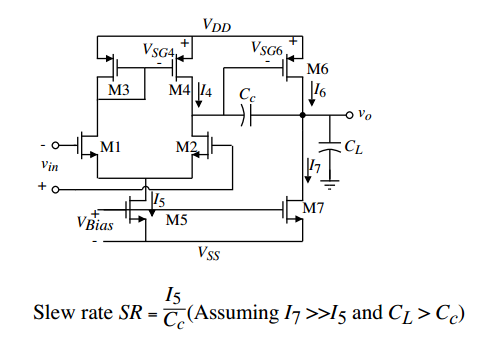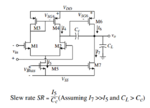anhnha
Full Member level 6
Could you explain a bit why slew rate is calculated by that formula along with that assumption?
I know that slew rate is defined as the maximum rate of change of output voltage per unit of time and is expressed as volt per second.
However, the lecture below give that formula without any explanation is a bit confusing.

I know that slew rate is defined as the maximum rate of change of output voltage per unit of time and is expressed as volt per second.
However, the lecture below give that formula without any explanation is a bit confusing.
